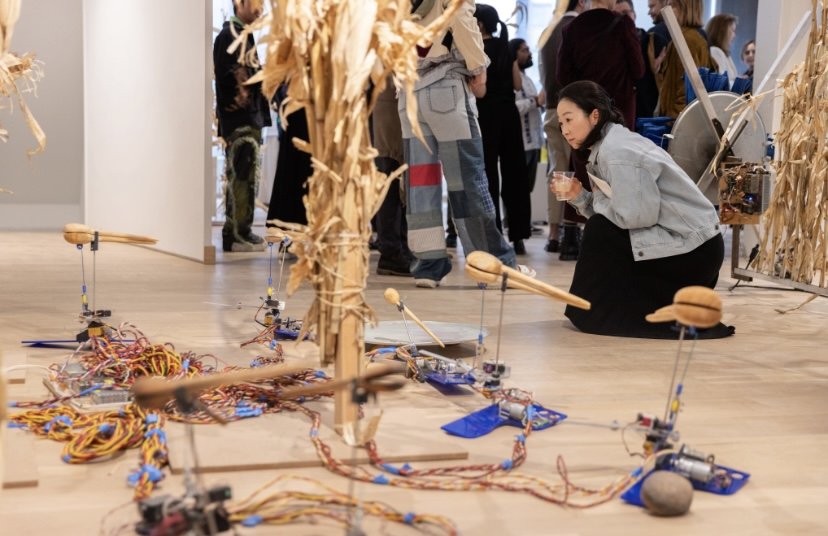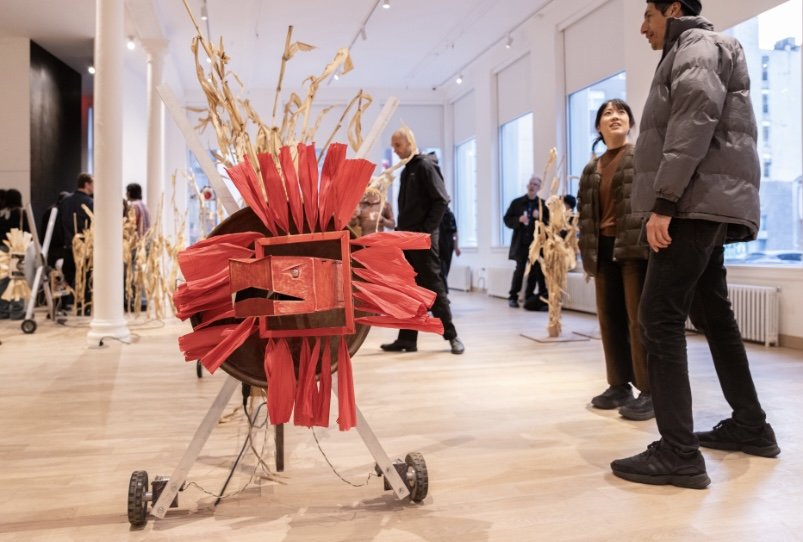My book project on Indigenous technologies explores the emergence of innovative robotic imaginaries in Latin America, tracing their evolution from the twentieth century’s New World Avant-Garde. While robots have often been envisioned as heralds of a technocratic future in modern movements, three contemporary artists have uniquely engaged with this technology: Nahua artist Fernando Palma Rodríguez, Kichwa artist Manuel Amaru Cholango, and the Argentine Paula Gaetano Adi.
Indigenous technologies—a rich and expansive domain of knowledge and creation—are compellingly articulated through the lens of robotic art. This genre, much like other forms of digital art, operates through computer-based software and complex systems and networks. Since the 1970s, robotic art has increasingly addressed behavioral dynamics. Iconic experiments such as Nam June Paik and Shuya Abe’s Robot K-456 (1968), Thomas Shannon’s Squat (1966), Gordon Pask’s Colloquy of Mobiles (1968), and Norman White’s Ménage (1974) have become benchmarks of twentieth-century robotic art. Yet, in contrast to these precedents, the work of Indigenous and Mestizo artists in Latin America, confront critical issues of machine behavior and human interaction in ways that embody the holistic social networks inherent in Indigenous technological thought.
Through their robotic art, Palma Rodríguez, Cholango, and Gaetano Adi construct a technological framework rooted in other-than-human ontologies and directed towards a relational epistemology that transcends mere human augmentation. While the historical trajectory of robots has been shaped by a human-machine relationship centered on automation and control, the Indigenous perspective on robotics championed by these artists calls for a profound reorientation of these technologies. Their work advocates for the integration of broader principles of cultivation and the harvesting of life, challenging and redefining the conventional paradigms of robotic engagement.



